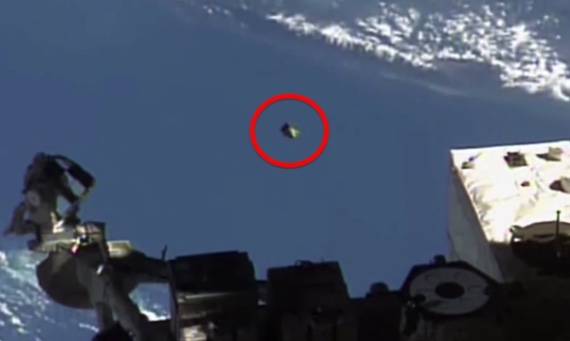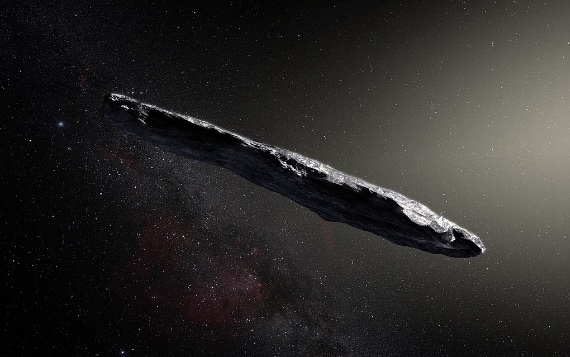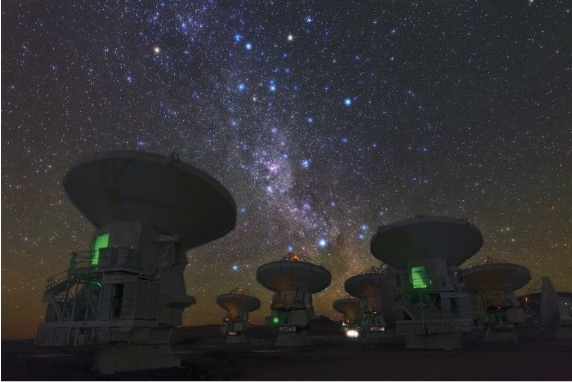“I want to believe” were the staunch words written below the image of a flying saucer on the poster that hung in the office of FBI agent Fox Mulder in the legendary series The X-Files. Mulder was far from alone: much of humanity shares his yearning. Indeed, popular belief in UFOs has flourished again in recent years after its period of greatest decline, as reports have been declassified and new official analyses undertaken. The latest of them is being carried out by NASA: after decades of avoiding the slippery slope of UFOs, the agency has commissioned an independent study whose conclusions will be known in spring 2023. But why now, and what can we expect from this study?
Since the birth of the UFO phenomenon in the late 1940s, the number of accumulated sightings is uncountable. By contrast, the amount of convincing evidence of an alien origin of such cases is perfectly describable: none. In his book Other Worlds, the astronomer and science populariser Carl Sagan wrote that “the reliable cases are uninteresting and the interesting cases are unreliable.” Over the decades, the long, fruitless wait for this confirmation has dampened the mood, and by the beginning of the 21st century, interest declined to such an extent that some ufological organisations closed down while UFO researchers admitted failure, speaking of an overall feeling of lethargy or self-denial.
Lethargy, yes, but not death. In recent years, sightings have been on the rise again, with surveys showing that the proportion of citizens convinced of their alien origin has risen from 20% in 1996 to 34% in 2022 (US data); this is higher than those who believe in more mundane explanations, at 32%. Other studies show much higher figures for belief in alien spacecraft, 51% or even 65%, and some suggest that the number of believers has shot up from 33% to 41% in just two years. A range of figures, yes, but supporting the same conclusion: belief in UFOs has risen from the ashes.
A question of faith and of cycles
But what is the reason for this revival, if there is no more evidence today than there has been in the last three quarters of a century? In his 1995 book The Demon-Haunted World, Sagan suggested that for many people this is not a question of evidence, but of faith. As Texas State University religious studies expert Joseph Laycock wrote, “the need to believe is ingrained in the human psyche.” Even when affiliation to traditional religions is at its historically weakest, new spiritualist cults—and even atheist churches—emerge in their place to meet that need. And according to Laycock, this is also where UFOs come in; it is not about scientific evidence, but about cultural cycles, in which a phase of disenchantment is followed by a phase of re-enchantment. And today we are in the latter.
Without going into what is the cause and what is the effect, this resurrection of the UFO phenomenon—or Unidentified Aerial Phenomenon (UAP), according to the name now preferred by the US government to replace the classic Unidentified Flying Object, but which does not seem to have caught on with the public—has been accompanied by a re-entry of UFOs into the realm of officialdom.

During her failed bid for the US presidency, Hillary Clinton promised to release all existing UFO information in the government archives. In 2017, it was revealed that a secret Pentagon programme dedicated to UFO research, called the Advanced Aerospace Threat Identification Program, which had allegedly been shut down in 2012, was still continuing. In 2020, it was announced that it was to be converted into the UAP Task Force (UAPTF) under the Office of Naval Intelligence. According to The New York Times, astrophysicist Eric Davis, an advisor to the former programme, spoke in a report of the retrieval of “off-world vehicles not made on this earth.”
In 2021, the creation of an office for UAP research became law, resulting in the transformation of the UAPTF into the All-domain Anomaly Resolution Office (AARO), a cryptic name that nevertheless formalises for the first time in decades a US government involvement in these investigations. At the same time, the Pentagon was busy declassifying recordings of sightings, such as the GOFAST, GIMBAL and FLIR1 videos. In June 2021, a report of 144 sightings by military personnel since 2004 was released, of which only one could be explained. In 2022, Pentagon representatives testified before Congress that the number of officially catalogued sightings now stands at 400.
Controversy in the scientific community
It is against this background that in June 2022 NASA made a surprising announcement: the launch of an independent study group dedicated to the investigation of UAPs. Surprising, because until now NASA’s stance in this field has replicated that of the scientific community in general: ignore it. Few scientists would dare to categorically deny the existence of alien artefacts on Earth, but fewer still have dared to openly defend the notion. Harvard University astrophysicist Avi Loeb tells OpenMind that he is reminded of “the story about a congressman who made anti-gay statements until he confessed that he is gay.”
Loeb is one of the few academics who have come out clearly in favour of the alien hypothesis, even arguing that ʻOumuamua, the first interstellar object detected in our Solar System in 2017, could have been an extraterrestrial probe. In 2021, in response to NASA administrator Bill Nelson’s statements postulating the involvement of scientists in UAP research, Loeb submitted a proposal to the agency, which the agency summarily ignored. Two months later, Loeb launched his own project, Galileo, which now has more than a hundred collaborators and whose aim is to move from the typical accidental or anecdotal sightings to systematic and rigorous observation using dedicated telescopes and satellite data to search for physical objects, and analysing the results with Artificial Intelligence systems.

Finally, the following year, NASA announced its UAP project, for which it has selected a 15-member panel under the leadership of astrophysicist David Spergel and the coordination of Daniel Evans from the agency’s Science Mission Directorate. The team brings together experts in planetary science, engineering, physics, biology, computational science, science policy, communication and aviation safety, including retired NASA astronaut Scott Kelly. Work began in October 2022, with the goal being to “lay the groundwork for future study on the nature of UAPs for NASA and other organisations,” according to the agency. To do this, the team will “identify how data gathered by civilian government entities, commercial data, and data from other sources can be analysed to shed light on UAPs. It will then recommend a roadmap for potential UAP data analysis by the agency going forward.”
A new analysis from a more scientific approach
However, NASA’s initiative has been met with reservations: the study will only last nine months and will only analyse unclassified information, i.e. data that has already been published and studied before. Evans has not responded to questions from OpenMind, and Spergel prefers not to comment on the project until its findings are published. Some experts are cautious: astrophysicist Chris Impey at the University of Arizona, who is not involved in the study, tells OpenMind that “the committee NASA formed is excellent and full of heavyweights with great expertise,” but adds: “The data they will be looking at is fragmentary and incomplete and hard to draw firm conclusions from. So, I doubt they’ll be able to move the needle much.”

Similarly, astrophysicist Steven Tingay at Curtin University in Australia, who is also not part of the project, told OpenMind: “I think the initiative by NASA is a good one,” because the approach will be rigorously scientific. However, he adds: “I don’t believe that the initiative will tell us a great deal more than what we already know, but it will be interesting to see an analysis of some accounts of UAPs.” Tingay predicts that whatever answer the study arrives at “will be more mundane than explanations that require visitation by aliens.” The astrophysicist hopes that at the very least the NASA study will help present the public with a more scientific approach to the UFO discussion than has been the case so far.
For his part, Loeb welcomes the initiative: “Overall, this outcome is gratifying and represents a win-win development,” he says; “it shares the intellectual DNA of the Galileo Project.” For Loeb, governments and scientists must work together in this endeavour, and “it doesn’t matter who tells the truth as long as it is being told.” As they also said in The X-Files, the truth is out there. And we need to know it, whatever it may be.
Comments on this publication